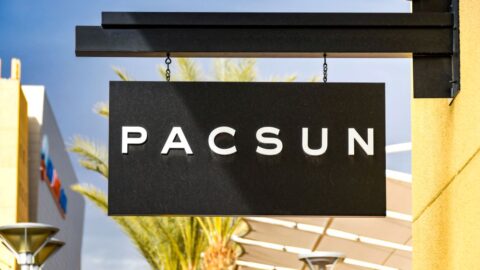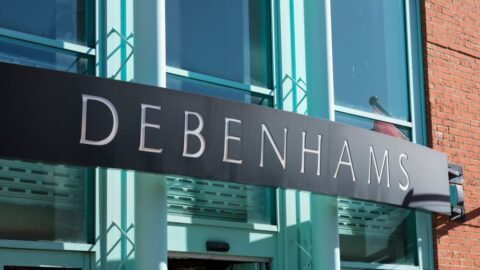Following is Part 1 of the Retail TouchPoints series focused on Retail Wins In Gamification. In this article, thought leaders and experts in the gaming space discuss the current state of gamification, and the impact it may have on consumer and employee engagement. Click here to read part 2.
Gamification is now a key strategy for companies across markets to educate and engage consumers as well as employees. By applying game mechanics in non-game contexts, organizations can engage users by encouraging them solve problems and achieve goals over a broad range of challenges.
As the popularity of gamification quickly rises, retailers should take note. The gamification market was worth approximately $100 million in 2012, and was projected to reach $2.8 billion by 2016, according to a study conducted by M2 research, reported in a 2012 Retail TouchPoints article.
Additionally, Gartner research predicted that more than 70% of Global 2000 organizations would have at least one gamified application by 2014, and those gamified elements would be as essential as social media and online retailers for customer retention and goods marketing.
In Part 1 of the Gamification series, readers will learn about the following:
- The Benefits Of Gamification For Retailers
- Challenges In Game Design For Retailers
- Developing A Gamification Strategy
- Choosing The Right Game Goals
The Benefits Of Gamification For Retailers
Retailers can leverage gamification by promoting competition between users and employees. This can be accomplished by providing performance rankings and offering goals and recognitions for achievements. For companies that have implemented this type of strategy, it has increased employee productivity and maximized consumer loyalty.
“Loyalty 1.0 was all about points for purchase, all the traditional loyalty programs like punch cards at car washes and airline clubs,” said Rajat Paharia, CEO of Bunchball, a gamification company with clients including Hasbro, Comcast and CBS. However, these loyalty programs all were based on practice and purchase because “those were the only forms of data that were available,” Paharia explained. Now, we’re in the era of “Loyalty 3.0”: a paradigm shift where retailers now have much more information on consumers, namely what they’re doing before and after making a purchase.
“Everything we’re doing now is being mediated by technology, whether it’s buying, collaborating or keeping track of sales and performance activities at work,” Paharia continued. “It’s all being tracked.” For example, consumers can write reviews, share reviews and spread awareness through social media. When these activities are positive, they can help promote businesses, without a financial investment from the business.
“This is the next generation of loyalty,” said Paharia. “It’s not just about dollars. It’s about all the different activities that customers and employees can do and how to motivate the ones that drive business value for you.”
Paharia and other thought leaders are defining gamification as the natural evolution of marketing and human resource management in the Internet Age. And video games have become a key contributor to the ongoing growth and success of gamification strategies, since more people are accessing games on the Internet.
“The reason why gamification works so well is related directly to the fact that young consumers are growing up in a world where video games are a part of mainstream culture,” noted Gabe Zichermann, Chair of the Gamification Summit and CEO of dopamine, in an interview with Retail TouchPoints. “However, even people that didn’t grow up around video games appreciate all the values that gamification has to offer in terms of feedback, sociability and all the other mechanics gamification brings.”
Currently more than 500 million people worldwide are playing computer and video games at least one hour each day, including 183 million in the U.S. alone, according to Jane McGonical, Director of Game Research & Develop at Institute for the Future and Chief Creative Officer at SuperBetter Labs.
Challenges In Game Design For Retailers
Retailers including Best Buy, HSN, and Gilt Groupe all have capitalized on gamification. Best Buy partnered with shopkick to boost foot traffic; Gilt Groupe launched Gilt Noir to boost consumer loyalty; and HSN integrated touch screen technology to develop interactive games where consumers can keep track of their scores and compete against their friends.
However, many gamification applications do not succeed, according to industry experts. A recent study released by Gartner has warned that by 2014, 80% of current gamified applications will fail to meet business objectives, primarily due to poor design.
“The problem that many gamified applications have is that they start at the end,” explained Brian Burke, VP of Research at Gartner and co-author of the study. “They say, ‘I have goals that I want my players to do, so I’ll make them do that,’ but players are not puppets. Any successful gamification campaign relies on being player-centric. Players are motivated when they are achieving their own goals. You’re not going to have any sustainable game objectives by trying to get players to achieve your goals.”
Implementing gamification mechanics solely for profit is a pitfall that quickly makes a company’s gamification campaign irrelevant. Consumers will lose interest in game mechanics that place an overt emphasis on sales and exposure.
“Not everything has to be ‘sell sell sell’,” said Sara Kowal, VP of Innovation at ePrize, a company that specializes in brand campaigns and consumer interactions across channels. “It’s good for consumers to be building a relationship with the brand based on other experiences, as well.”
For example, check-in application Foursquare made headlines during the summer of 2012 when it launched a new design that focused on social updates, deals and user content. Gamification mechanics the company became well known for were deemphasized as a result of user feedback.
“The lesson is that gamification works great when you know your audience,” said Todd Parsons, CEO of Aditive, a social media services solution provider. With Foursquare, checking in is an attractive feature but it has dependencies. It only works with high-density locations such as San Francisco or New York. If the density of places to check isn’t there, consumers lose attention because you can’t feed ego and competition regularly enough. Because of this, the breakdown becomes one of both density and value exchange.” In other words, the Foursquare business approach made the application unattractive to anyone living outside of a highly urbanized area.
Developing A Gamification Strategy
Any successful business plan must start with goals and a framework of how to best achieve those goals. Gamification campaigns are no different. Before embarking on any gamification campaign, retailers must answer three basic questions, according to Paharia:
- Who is my audience?
- How do I engage and involve my audience?
- What do I want my audience to do?
To obtain a clearer picture of target consumers, as well as the features and rewards they will respond most favorably to, retailers must be able to track and analyze the massive torrents of data being collected across channels. Along with purchase history, merchants now can track user reviews, endorsements on social media applications and surveys to identify a consumer’s location, age and interests. It is essential to find a way to interpret all of this data, set goals and take the correct course of action to reach those goals.
“If your incentives are misaligned with what you want to achieve, you’re going to be in trouble,” Paharia explained. “Are you trying to drive quantity of contribution or quality of contribution? Think very clearly about what it is you’re actually trying to get from consumers.”
For example, Adobe partnered with Bunchball to create LevelUp for Photoshop, a gamified tutorial of the Photoshop application, which is now packaged with a 30-day free trial. Consumers can learn basic functions within Photoshop via assigned missions, and are rewarded with points and badges for each task they complete. Users also can check the weekly leaderboard and refer to a constantly updated game activity feed to see how they compare to their peers. Adobe and Bunchball focused on teaching users 12 key pieces of functionality in Photoshop, and as a result, Adobe saw a 400% increase in purchases from trial users.
Choosing The Right Game Goals
The end goal of any gamified application is to motivate user behavior. To create winning gamification strategies, it is essential that organizations understand the basics of game design, Burke explained. Different types of games and rewards promote and encourage different kinds of behaviors.
Burke offered a high-level overview of different types of games and rewards:
- Competitive games pit players against one another. Poker is a prime example of this type of game. There are no teams and only one victor will walk away with all of the winnings. This encourages aggressive competition, with all players competing for the entire reward.
- Collaborative games promote cooperation. On a commercial fishing boat, each person on the crew gets paid a percentage of the total catch, so it is in the best interests of everyone on the crew to collaborate and maximize results. The more they catch together, the more money they will make.
- Intrinsic rewards are accolades and recognition for achievements. Beauty pageants fall under this category. The reward of winning comes from the accomplishment of receiving a title and being considered the best. There is little tangible reward in winning a pageant but the competition among contestants is fierce, which means pageants also are considered competitive games.
- Extrinsic rewards are tangible rewards. The simplest form of tangible rewards is money. Poker and commercial fishing both provide monetary compensation in the end, but for retailers, this could mean anything from preferred customer discounts, sweepstakes entries or complimentary items.
In addition, Burke shared four different currencies that are used in gamification to motivate people to take action:
- Fun: This is a currency that entices consumer in the same manner as an arcade with flashing lights, high-energy music and the thrill of chance-based rewards. In gamification applications, this is anything that rewards a player using surprise and/or random awards.
- Things: These rewards typically are tangible, such as free flights in frequent flyer programs or discounts for a specific retailer.
- Self Esteem: This is positive feedback that builds up a player’s confidence. Words congratulations and encouragement, as well as any other form of personal recognition for notable achievements fall under this category.
- Social Capital: Anything that builds a reputation within peer groups. Badges are typically used to represent social capital, as they easily can be visible and displayed.
However, there are many important steps that come before considering the game economy. Companies that begin their gamification campaigns by thinking of the game economy first are almost always doomed to fail.
“Companies must go through the proper steps,” Burke said, including “how to position the game, their business objectives, the target audience, player personalities and what they want from us. We can only think about engagements cycles and how to reward consumers after these things have been laid out. The game economy comes at the end of the design cycle. The problem that many gamified applications have, and the reason why so many of them are projected to fail, is that they start at the end.”
Click here to read part 2.












